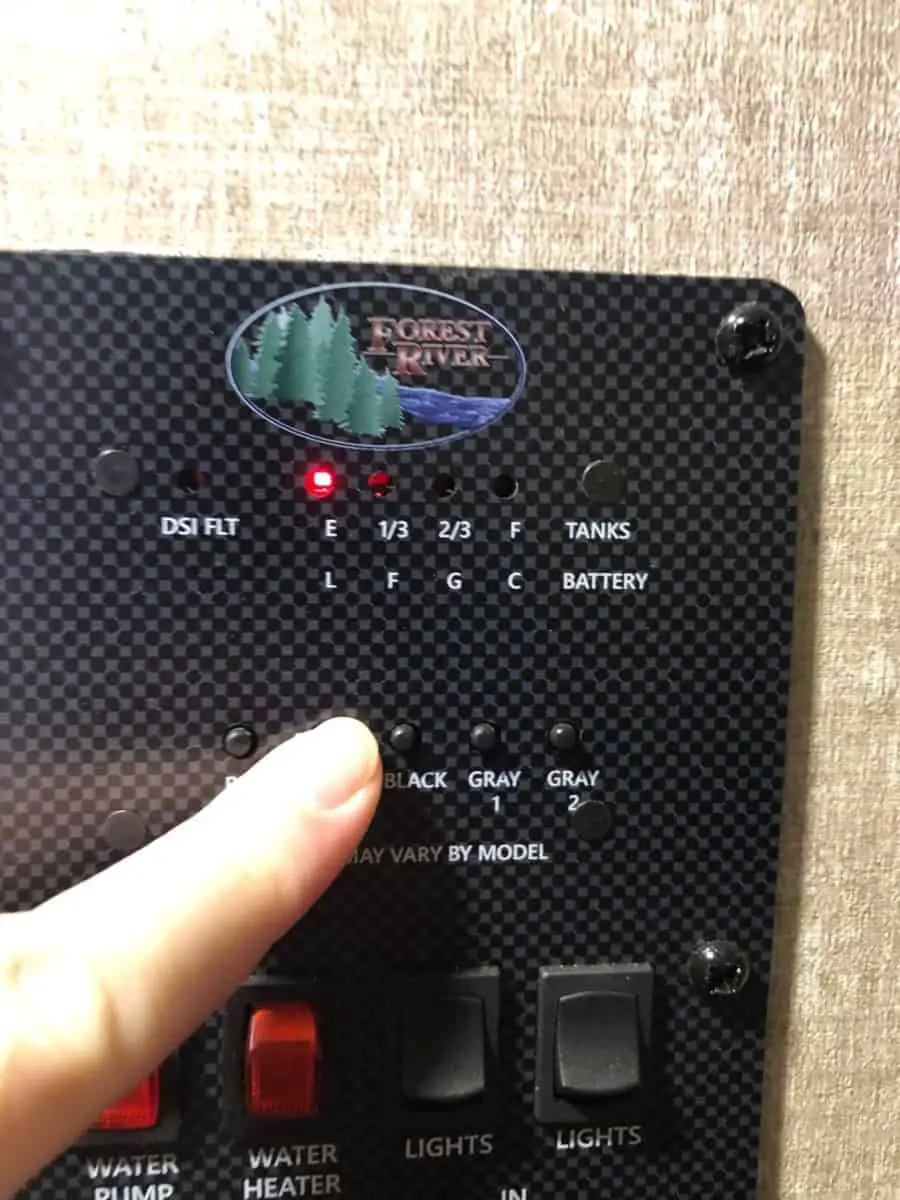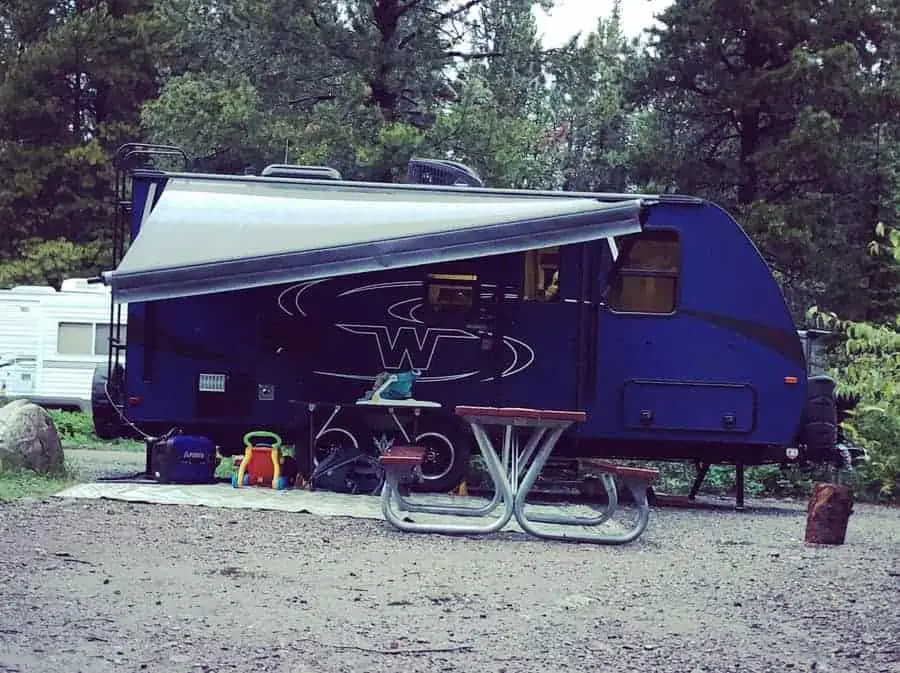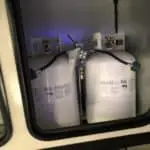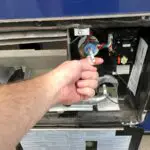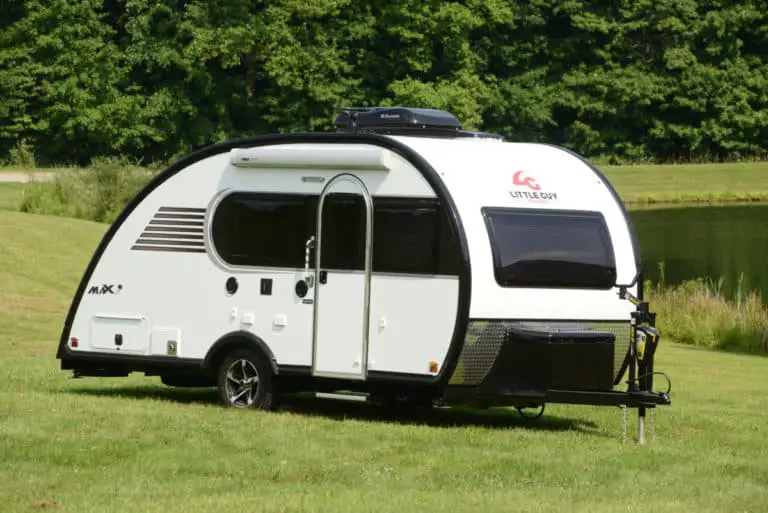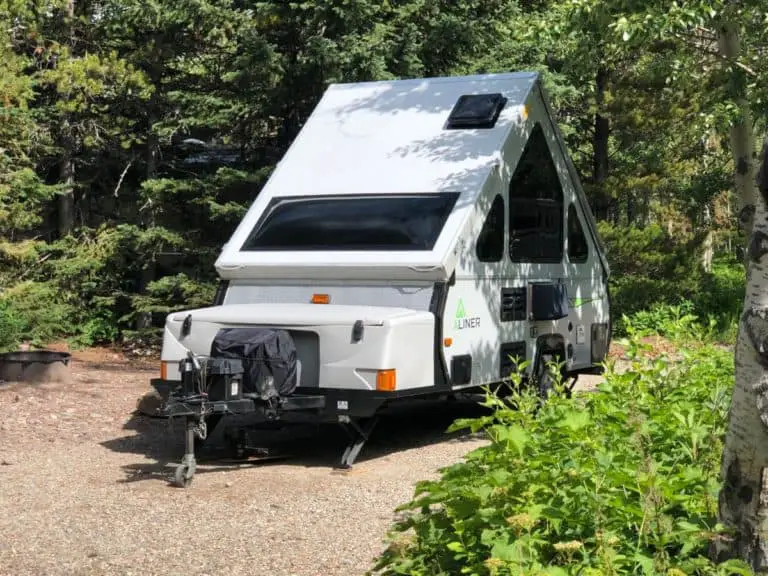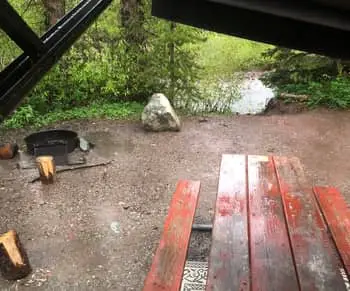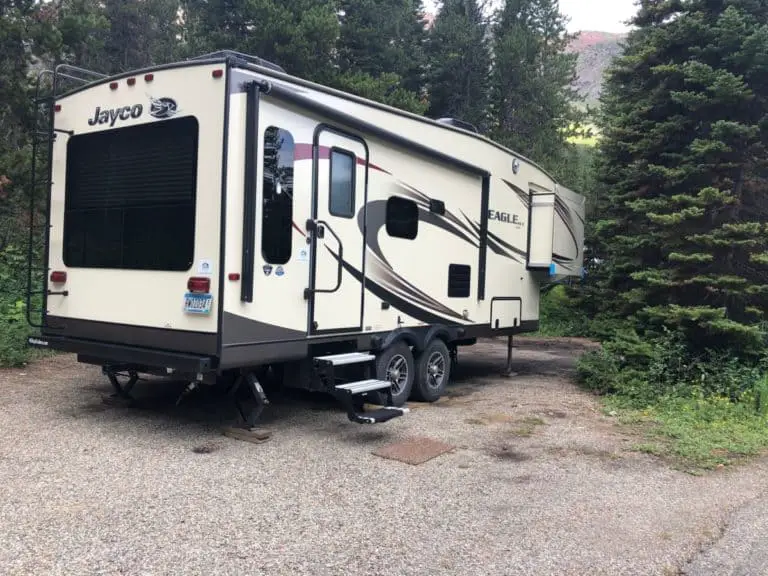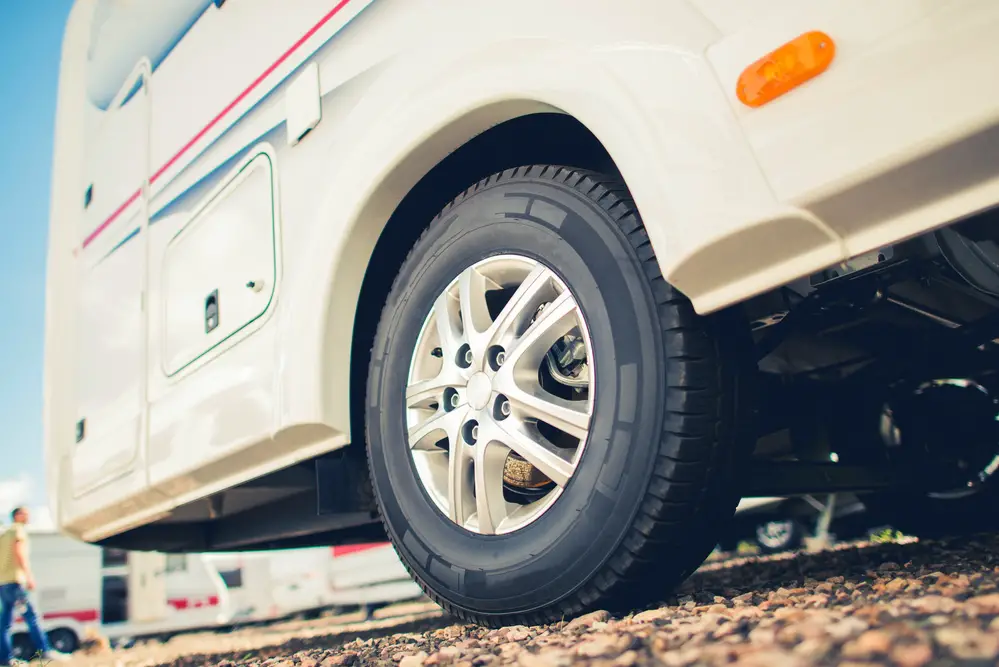RV Fresh Water Tank Ultimate Guide
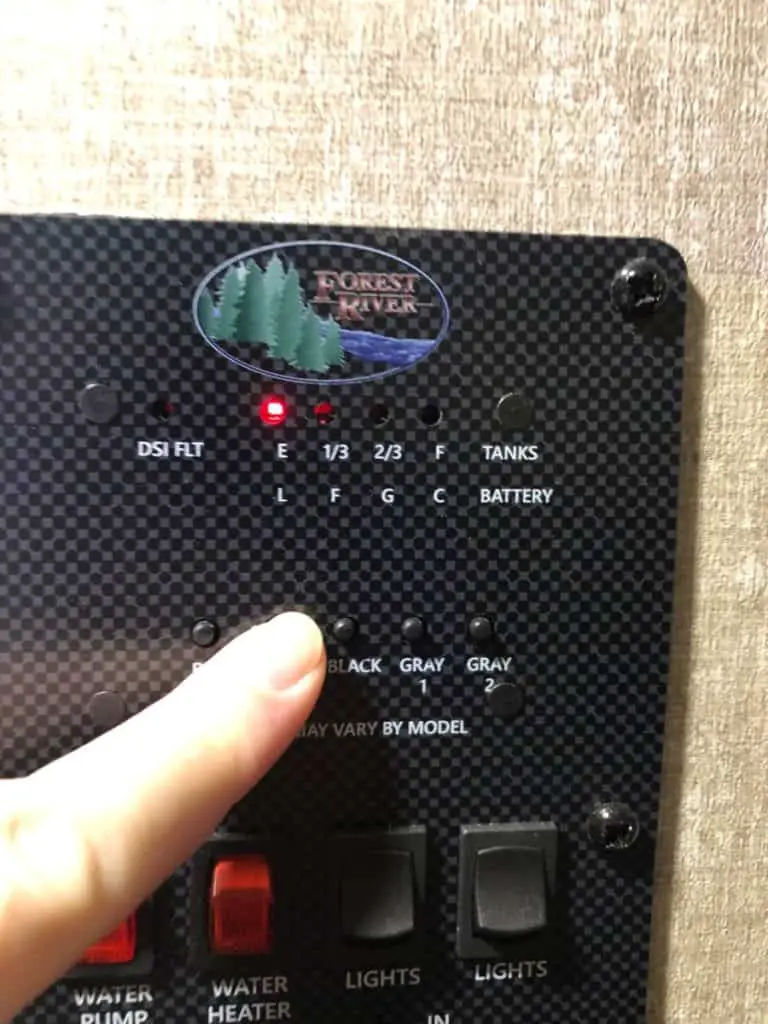
What is a Fresh Water Tank?
An RV fresh water tank is a place where you can store drinking water safely in your RV, travel trailer, or camper. It is for making water available to you, your family and friends when you are away from home taking that much-deserved break from reality in your recreational vehicle (RV). Fresh water will allow you to have a drink, take a shower and wash your dishes while on the road. The fresh water tank is one of three water tanks involved with keeping a functional mobile lifestyle. The wastewater from sinks and the shower go to the grey water tank, and the black water tank takes care of waste from the toilet. Still, it is the fresh water tank that can keep the dishes sparkling clean and your crew fresh and hydrated.
The beauty of your fresh water tank is that with it, you become truly self sufficient. While the human body can survive more than three weeks without food, it can’t survive even a third as long without water. Although a RV is often times about having fun, spending time with loved ones, and getting to explore new places, it is comforting to realize that you have in your driveway the means to stay nourished in the event of an emergency. You never know when your RV Water tank size could save the day.
What is the average size of a RV Fresh Water Tank?
The average RV water tank size depends on the size of your vehicle. Recreational vehicles come in three classifications. The largest is a class A which is about the size of a bus, and predictably the most expensive to own. The average fresh water tank for this class is going to be from 75 to 100 gallons. Somewhat confusingly, a class B RV is actually the smallest size vehicle which closely resembles a van. They have the advantage of being able to fit into normal parking spaces. As the smallest, a water tank for a class B is going to run in the 20 to 40 gallon range. The class C RV strikes a balance by being more affordable than a class A as well as more spacious than a class B. The average RV water tank size for a class C is about 35 to 60 gallons.
The average size of a freshwater tank size on a travel trailer is 31-48 gallons. Some may be as small as 12 gallons, and some as large as 80 gallons.
RV Water tank size will depend on the size of your RV. To break down tank sizes, one cubic foot can hold almost seven and a half fluid gallons. Using this conversion, you can visualize how much space a fresh water tank is going to take up. A 30 gallon tank is about four cubic feet. 50 gallons is going to be a little more than six and a half cubic feet. 90 gallons is about 12 cubic feet. Different RVs will store the tank in different areas of the vehicle, and so the dimensions of your particular water tank will vary depending on where it is. However, this tank is going to help you be clean and hydrated in your home away from home, so it is space well spent.
How long can I expect my fresh water tank to last?
While planning your get-away, being mindful of how long your supply of water will last is a helpful metric to make sure nobody runs dry. The average camper will use about six gallons of water a day. At this rate, a couple traveling in a class B motorhome or travel trailer with a 30 gallon fresh water tank will have enough water for two days, with some left over to last them until they find another water source on the third day.
Obviously, the more people you have, the faster you are going to use up your water supply. There are water saving shower heads available to help you regulate your water usage as well as other conservation ideas we go over in our article about how long a fresh water tank lasts. Another option could be to purchase plastic jugs of drinking water so that you are only using the fresh water from your tank for plumbing.
Rationing and calculating your water use can be part of the fun. Will you use your water for drinking only, cleaning dishes, or taking showers? If you stay at a campground with on site showers, you may want to use them to conserve your water if there are no hookups.
The reason why many people enjoy driving out to places without campground amenities, such as refillable water sources, is to get back to nature. So much of life today has to do with being connected to multiple sources of information constantly. If it’s not a call on your cell phone then it’s a text sent to your smart watch. These modern conveniences have their benefits, of course, but sometimes the soul needs a chance to peacefully recharge with a moment away from it all.
Using your mind to manage your water resources gives you mastery over options and the ability to enjoy the freedom of nature on your terms. The answer to how long does RV water last depends on the choices you make and how many people will be using it.
How long will a Fresh Water Tank stay Fresh?
But what if you still have some water left in your tank in between your road warrior adventures? Federal Emergency Management Agency (FEMA) says that water can stay potable for six months. However, many RV owners will advise against drinking water from your tank if it has been there for longer than two to four weeks.
If you are worried about the safety of drinking the water, you have another reason to take the option of bringing bottles of drinking water and just using your fresh water tank for bathing, toilets, etc. The easiest way to make sure your water hasn’t been sitting too long to be safe to drink is to drain out your fresh water tank after every excursion.
How to fill a Fresh Water Tank in your RV
The amazing thing about owning a recreational vehicle is the freedom you possess to go wherever you want and still have modern conveniences at your fingertips. Many RV owners like to travel to areas without water available. This is referred to as dry camping or boondocking.
If this is your goal, you will need to fill up your fresh water tank so that you have enough water to meet your needs. Fortunately, the method for this operation is not especially difficult.
- First, locate the fresh water tank in your vehicle, as different models store it in different places.
- Next, find the connection(s) on or near the fresh water tank. Your tank may have a gravity fill water connection. If so, you can fill up your tank by inserting a hose connected to a water source here. Make sure the vent is clear, as this is where the oxygen can escape your tank to make room for the water. A clean vent can help to speed up the process.
- Alternatively, you may also have one connection on your fresh water tank which is for hooking up to a source of city water. If you choose this option, make sure to not run your water pump as to create additional pressure which could damage your plumbing. Some RV’s may only have one connection point which can toggle your system to fill up your tank instead of leaving it on the setting for piping the city water straight to your kitchen and bathroom.
- When attaching hoses to fill up the tank, use special care to only use clean fresh water hoses that you never use with the grey or black water tanks. This will prevent contamination from your waste water tanks.
It’s important to double check that the hose you get is specifically designated as drinking water safe. They are usually white in color and will be free from harmful chemicals such as lead and phthalate. Make sure to only use this hose for potable water. Hose lengths can range from less than two feet to 50 feet and more. We currently carry two 25’ hoses with us just in case we are a bit further away from a water source. We also bring a water bandit in case the water source doesn’t have a threaded connection. As long as it is a hose designed for drinking water, the only length requirement for the hose is the distance between your water tank and your water source.
It’s a good idea to run the water through a water filter while filling up your drinking tank. We use this simple to use filter at the beginning of our hose connection. Also, make sure this filter and other filters in your vehicle have been changed within the last six months.
Another tip is to turn on the faucets and pump in your vehicle in the middle of the filling process. This can allow you to store up to 10 additional gallons of water by filling your hot water tank.
On the topic of space, another consideration is that you might not want to fill up your fresh water tank all the way if you plan on being around other sources of water during your trip. The reason for this is that carrying around unnecessary water weight will reduce your gas mileage and affect the way your vehicle tows. After all, each gallon of water you carry costs you more than eight pounds.
How to Empty a Freshwater Tank
Should you need to empty the fresh water tank, look for the drain on the bottom of your trailer and open it up. Because it’s fresh water, you can drain it right out on the ground. If there is a little bit of water still at the bottom of your tank after you drain, this isn’t really a problem.
However, if you want to remove it you can run some fresh water in the tank while keeping the drain open to flush out the remainder. Make sure that the drain you find is the one corresponding to your fresh water tank as opposed to your grey or black water tank. For the latter two, you will require a dumping station.
How to Sanitize a Fresh Water Tank
Sanitizing your travel trailer fresh water tank is an important safety issue. Every six months it is a good idea to sanitize the fresh water tank in your RV. Another signal that it’s time to sanitize is any funny taste or smell to your water. Use one-fourth cup of bleach per ten gallons of water storage. Therefore if you have a 40 gallon tank you want a cup of bleach. For every cup of bleach, mix with a gallon of water. Put a clean funnel in the fresh water tank and pour in your bleach/water solution. After that, completely fill your tank with water. This will dilute the bleach so there is no risk of corroding your tank.
Now that the tank is filled, turn on the water pump inside your vehicle and turn on all the faucets and shower and wait until you get a strong smell of chlorine. This way, you know your cleaning solution has worked its way all the way through the system.
At this point, you can top off the fresh water tank and let it sit from between eight to twenty-four hours. You may also want to drive around in your trailer or RV to slosh the mixture on all parts of the tank. Now you are ready to drain out your fresh water tank of the cleaning solution and fill it up with fresh water. You may need to fill with fresh and drain several times until you do not smell bleach anymore.
The last thing to do is to turn the sinks on again for a few minutes until you can flush out the chlorine water from the system. Now you know how to sanitize travel trailer fresh water tank, and there’s nothing stopping you from hitting the road with a squeaky clean water system.
Must Have Fresh Water Accessories
Part of the fun of owning an RV can be collecting anything RV related. As far as your fresh water tank goes, there is no shortage of other drinking water accessories for you to collect. For instance, you may want to pick up some or all of the items on the list of recommended items below. As the Boy Scouts of America are fond of reminding us, it is better to be prepared.
You will want to pick up a water pressure regulator valve. This could be of use in case the water source you find in your travels has a water pressure level that is too high and may burst your pipes. That could put a damper on your trip, quite literally! These are available in adjustable units and fixed pressure. We like the adjustable to be able to dial in the correct pressure and not reduce it by too much.
Another handy item available for purchase is a water tank filler. With this device, you can turn on and off water at the end of your hose. The water tank filler will also help get air flowing through your tank so it can fill twice as fast.
To further clean your water supply you could run it through a water filtration system to make sure it’s free of any sort of debris.
The store can also furnish you with drinking water freshener. If you add some of this to your fresh water tank you can make your water taste normal for longer. After all, 60% of your body is made of water. It might as well taste fresh.
While we are now addressing the finer points of accessorizing your RV, you might want to pick up a relatively inexpensive in-line check valve. Check valves make sure that fluids can only go one direction when going through a hose. The reason you may need this check valve is in the event that you have a malfunction where you are hooked up to city water and using that as your active water source for your faucet etc., but your fresh water tank is filling up while this is happening.
Under normal circumstances, only one of these two things should be happening at a time. The cause could be that the check valve on your pump is stuck in the open position. You can attach your extra in-line check valve to the pump and that should prevent your water tank from filling when it’s not supposed to.
A six gallon water jug (with a spout) could also make your dry camping experience more enjoyable. If you brought a few friends, you may find yourself in need of refilling your water tank before you are ready to pack up and go. If that is the case, grab your water jug and find a place to fill it. Then, head on back to the RV. Insert the fill spout in your fresh water fill, and ta da, you now have 6 additional gallons of water to use.
Now you know a bit more about what to expect when it comes to the fresh water system in your mobile home, be it a class A, B, C, travel trailer, or camper. You know to be mindful of how long your water supply should last you, as well as ways you can ration it if need be. The basics of how to fill and empty your water tank are within your grasp. You also have a general idea of how to go about sanitizing your water system (every six months!). The actual work involved in this shouldn’t take more than a few hours, as most of the time in the sanitization process is down time waiting for the cleaning solution to do its work. Also, you have been introduced into the wider world of drinking water accessories. You’ve been exposed to a bush-fix for how to fill up your tank if you have a source of fresh water but no pump. Now it’s time for you to set out on your own adventure and find the sense of liberty that comes with being able to move your living space wherever you want. With enough water to get you there, nothing is stopping you.
Be the first to be notified about FREE tips, hints, coupon codes, and email-exclusive information. All for FREE!

